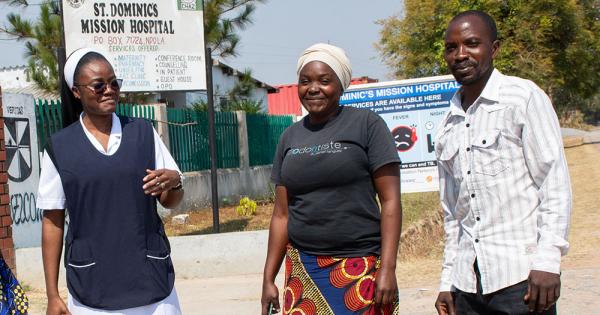The Enclosure of the Commons and the War Economy: A Feminist and Anti-Colonial Critique – CounterPunch.org

Report on the Commons as a Framework for Achieving the Sustainable Development Goals
Introduction: Defining the Commons in the Context of Global Sustainability
The commons refers to shared cultural and natural resources, including air, water, and land, which are collectively managed and protected by a community. This model, rooted in mutual responsibility and sustainable stewardship, offers a foundational framework for achieving the Sustainable Development Goals (SDGs). However, the historical and ongoing enclosure of the commons through privatization and militarization presents a significant obstacle to the 2030 Agenda for Sustainable Development. The destruction of these shared resources undermines efforts to achieve goals related to poverty, equality, and environmental protection, replacing cooperative systems with competition and exclusion.
The Historical Enclosure of the Commons: A Conflict with Sustainable Development Principles
The Privatization of Communal Resources and its Global Consequences
The systematic enclosure of common lands, which began in medieval Europe and was globalized through colonialism, directly conflicts with the principles of sustainable and equitable development. The English Enclosure Movement of the 16th century, for example, privatized vast communal lands, concentrating wealth and dispossessing local populations. This model was exported to Africa and the Americas, where colonial powers dismantled communal systems of governance and resource management.
- Undermining SDG 1 (No Poverty) and SDG 2 (Zero Hunger): The loss of access to common lands for grazing, firewood, and water stripped communities of their means of subsistence, driving poverty and food insecurity.
- Exacerbating SDG 10 (Reduced Inequalities): Enclosure created a system where wealth and resources were siphoned from the many to a small elite, deepening social and economic disparities.
- Contradicting SDG 16 (Peace, Justice and Strong Institutions): The “war economy”—a system built on conquest and extraction—relied on enclosure to commodify nature, fundamentally opposing the goal of building peaceful, just, and inclusive societies.
The establishment of institutions like the Dutch East India Company formalized an extractive economic model that prioritized profit over the principles of reciprocity and balance, a direct challenge to SDG 12 (Responsible Consumption and Production).
Gendered Impacts of Enclosure: A Critical Setback for SDG 5
Feminist Analysis of the Commons’ Destruction
Feminist scholars such as Silvia Federici, Maria Mies, and Vandana Shiva have demonstrated that the destruction of the commons is a deeply gendered process that disproportionately harms women, thereby impeding progress on SDG 5 (Gender Equality). Their work highlights that the struggle for the commons is a challenge to patriarchal and capitalist systems that devalue women’s labor and their role as stewards of communal resources.
Key Impacts on Women and Gender Equality
- Erosion of Autonomy and Economic Roles: As argued by Silvia Federici, enclosure diminished women’s autonomy by removing them from communal land management and confining their labor to the domestic sphere, undermining their economic independence and decision-making power (Target 5.5).
- Increased Labor and Vulnerability: Vandana Shiva’s work on “water wars” illustrates how the privatization of essential resources like water places a greater burden on women and girls, who are often responsible for its collection. This limits their time for education and economic activities, hindering progress on SDG 4 (Quality Education) and SDG 8 (Decent Work and Economic Growth).
- Reinforcement of Systemic Disadvantages: Maria Mies contends that the commodification of nature parallels the appropriation of women’s unpaid labor. This dynamic reinforces patriarchal power structures and undermines women’s traditional roles in resource management, directly opposing the objective of SDG 5 to end all forms of discrimination against women and girls.
Reclaiming the Commons: Pathways to a Sustainable and Peaceful Future
Indigenous-Led Movements and the Realization of the SDGs
Contemporary movements to reclaim common lands, particularly those led by Indigenous communities, exemplify a practical approach to achieving multiple SDGs. The Penobscot Nation’s successful reclamation of ancestral territory is a powerful example of restoring both ecological balance and social justice.
- SDG 10 (Reduced Inequalities): Such movements directly address the historical injustices and dispossession faced by Indigenous peoples.
- SDG 15 (Life on Land): They restore models of sustainable land stewardship rooted in traditional ecological knowledge, contributing to biodiversity and ecosystem health.
- SDG 16 (Peace, Justice and Strong Institutions): The act of reclaiming sovereignty is a step toward building more just and inclusive institutions.
- SDG 5 (Gender Equality): These efforts often work to restore the central role of Indigenous women in resource governance and community leadership.
The Commons as a Model for a Peace Economy
The work of scholars like David Bollier repositions the commons as a viable alternative to the extractive “war economy.” A commons-based approach promotes a “peace economy” built on cooperation, shared governance, and ecological sustainability. This vision aligns directly with the overarching goals of the 2030 Agenda.
- It offers a framework for SDG 12 (Responsible Consumption and Production) by prioritizing stewardship over exploitation.
- It embodies the principles of SDG 17 (Partnerships for the Goals) through its emphasis on solidarity, trust, and collective action.
- Ultimately, it provides a transformative model for achieving SDG 16 (Peace, Justice and Strong Institutions) by building social and economic systems grounded in cooperation rather than conflict.
1. Which SDGs are addressed or connected to the issues highlighted in the article?
The article on the commons, its privatization, and the gendered impacts of this process connects to several Sustainable Development Goals. The analysis highlights the interconnectedness of environmental stewardship, social equity, and economic models.
-
SDG 5: Gender Equality
This is a central theme of the article. It repeatedly emphasizes how the destruction of the commons “disproportionately impacts women and other marginalized groups.” The text cites feminist scholars like Silvia Federici, who argues that enclosures created a “new gendered division of labor” and diminished women’s autonomy, and Vandana Shiva, who highlights how water privatization increases the vulnerability of women tasked with water collection.
-
SDG 10: Reduced Inequalities
The article explains that the enclosure of the commons is a process that syphons “wealth to a minority of elites while permanently dispossessing local populations.” This dynamic increases inequality both within and between countries, as exemplified by European colonization, which imposed extractive economies on Africa and the Americas. The focus on the disproportionate impact on women and Indigenous communities directly addresses the goal of reducing inequalities.
-
SDG 15: Life on Land
The core concept of the commons refers to shared natural resources, including “land, water, forests, and biodiversity.” The article discusses the historical management of these resources, their privatization, and modern efforts to reclaim them, such as the Penobscot Nation’s reclamation of ancestral territory. This directly relates to the sustainable management of terrestrial ecosystems.
-
SDG 6: Clean Water and Sanitation
Water is explicitly mentioned as a key common resource under threat. The article cites Vandana Shiva’s work in “Water Wars,” which critiques the “commodification of water” and its effect on rural women who are “often tasked with water collection.” This connects the issue to the sustainable management of water resources and ensuring access for all.
-
SDG 16: Peace, Justice and Strong Institutions
The article frames the entire issue as a conflict between a “war economy—a system driven by conquest, territorial control, and profit accumulation” and a potential “peace economy” based on the commons. It discusses the need for new forms of “collective governance” and “shared decision-making” as an alternative to the centralized, militarized state structures that drove enclosures. The mention of Indigenous-led landback movements also points to struggles for justice and the restoration of sovereignty.
-
SDG 1: No Poverty
The article links the destruction of the commons directly to poverty. It states that the enclosure movement led to the “dispossession” of local populations. By removing access to essential resources for survival like “firewood, grazing grounds, and fresh water,” privatization undermines the economic foundation of communities and creates poverty, particularly in rural and Indigenous contexts.
2. What specific targets under those SDGs can be identified based on the article’s content?
Based on the issues discussed, several specific SDG targets can be identified:
-
Target 5.a: Undertake reforms to give women equal rights to economic resources, as well as access to ownership and control over land and other forms of property, financial services, inheritance and natural resources, in accordance with national laws.
The article’s focus on how enclosure and privatization dispossessed women from common lands and undermined their roles as “traditional resource managers” directly relates to this target. The struggle to reclaim the commons is presented as a fight for women to regain control over natural resources.
-
Target 5.5: Ensure women’s full and effective participation and equal opportunities for leadership at all levels of decision-making in political, economic and public life.
The text states that as common lands were privatized, “women found themselves excluded from decision making.” The promotion of commons-based “collective governance” and the highlighting of the “erasure of Indigenous women’s leadership in resource management” connect directly to the need for women’s full participation and leadership.
-
Target 10.2: By 2030, empower and promote the social, economic and political inclusion of all, irrespective of age, sex, disability, race, ethnicity, origin, religion or economic or other status.
The article’s central argument is that the destruction of the commons is a process of exclusion that “disproportionately impact[s] women and other marginalized groups,” including Indigenous communities. The call to reclaim the commons is a call for a more inclusive model of social and economic life.
-
Target 15.6: Promote fair and equitable sharing of the benefits arising from the utilization of genetic resources and promote appropriate access to such resources, as internationally agreed.
Vandana Shiva’s work, cited in the article, focuses on the “consequences of privatizing natural resources—especially water, seeds, and biodiversity.” This directly aligns with the target of ensuring fair and equitable benefit-sharing from genetic resources, which are part of the commons.
-
Target 16.7: Ensure responsive, inclusive, participatory and representative decision-making at all levels.
The article contrasts the top-down privatization driven by “centralized states” with the commons model, which represents “collective care, mutual responsibility, and sustainable stewardship.” David Bollier’s work is cited to emphasize the importance of “collective governance and shared decision-making,” which is the essence of this target.
-
Target 6.b: Support and strengthen the participation of local communities in improving water and sanitation management.
The discussion of water as a common resource that was “collectively managed” before being privatized speaks to this target. The critique of corporate control over water implies a need to restore and support community participation in its management.
3. Are there any indicators mentioned or implied in the article that can be used to measure progress towards the identified targets?
The article, being analytical rather than statistical, does not mention official SDG indicators. However, it implies several qualitative and quantitative measures that could be used to track progress:
-
Indicator for Target 5.a (Women’s control over land):
An implied indicator is the proportion of land and natural resources under communal or collective tenure versus private ownership. The article also points to the success of the Penobscot Nation’s “reclamation of more than 30,000 acres of their ancestral territory,” suggesting that the acreage of land returned to community and Indigenous control is a key measure of progress.
-
Indicator for Target 5.5 (Women’s participation in decision-making):
The article discusses the “erasure of Indigenous women’s leadership in resource management.” A relevant indicator would be the proportion of women, particularly Indigenous and rural women, in leadership positions within community-based resource management bodies.
-
Indicator for Target 16.7 (Inclusive decision-making):
The text champions “collective governance” and “shared decision-making.” Progress could be measured by the existence and legal recognition of policies that protect and promote commons-based governance systems at local and national levels.
-
Indicator for Target 6.b (Community water management):
The critique of water commodification implies an indicator: the proportion of water resources managed by local communities versus private corporations. This would measure the shift away from privatization towards the commons model advocated in the article.
4. Create a table with three columns titled ‘SDGs, Targets and Indicators” to present the findings from analyzing the article. In this table, list the Sustainable Development Goals (SDGs), their corresponding targets, and the specific indicators identified in the article.
| SDGs | Targets | Indicators (Implied from the Article) |
|---|---|---|
| SDG 5: Gender Equality | Target 5.a: Give women equal rights and access to ownership and control over land and natural resources. | Proportion of land and resources under communal tenure; Acreage of ancestral land returned to community control. |
| SDG 5: Gender Equality | Target 5.5: Ensure women’s full and effective participation and equal opportunities for leadership in decision-making. | Proportion of women in leadership roles within community-based resource management bodies. |
| SDG 10: Reduced Inequalities | Target 10.2: Empower and promote the social, economic and political inclusion of all. | Prevalence of commons-based economic models that include marginalized groups (women, Indigenous peoples). |
| SDG 15: Life on Land | Target 15.6: Promote fair and equitable sharing of benefits from the utilization of genetic resources (e.g., seeds, biodiversity). | Number of legal frameworks protecting traditional knowledge and preventing the privatization of seeds and biodiversity. |
| SDG 16: Peace, Justice and Strong Institutions | Target 16.7: Ensure responsive, inclusive, participatory and representative decision-making. | Existence and strength of legal frameworks that recognize and protect commons-based collective governance systems. |
| SDG 6: Clean Water and Sanitation | Target 6.b: Support and strengthen the participation of local communities in improving water management. | Proportion of water resources managed by local communities versus private corporations. |
Source: counterpunch.org

What is Your Reaction?
 Like
0
Like
0
 Dislike
0
Dislike
0
 Love
0
Love
0
 Funny
0
Funny
0
 Angry
0
Angry
0
 Sad
0
Sad
0
 Wow
0
Wow
0



























;Resize=805#)




















































